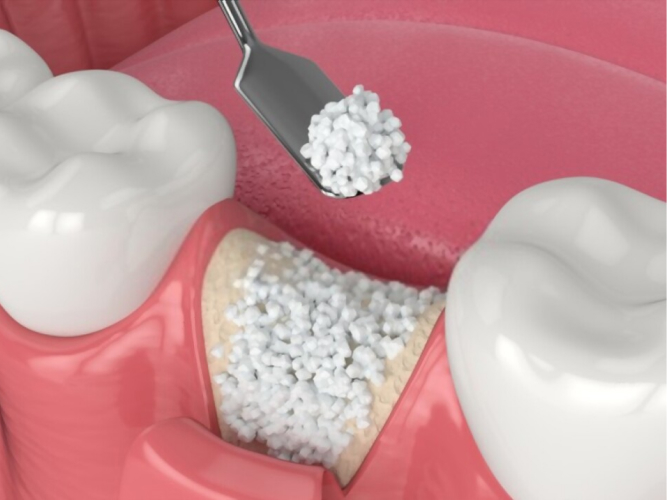Implant Treatment in Bone Deficiencies
An aesthetic smile is the expression of power;
the smile is the sharp sword of this power.

Bone deficiencies are a serious condition that can cause problems during implant treatment. This is because there must be sufficient bone volume for implants to be placed correctly. However, some patients may experience bone failure. There are many causes of bone deficiencies.
The most important of these is bone loss after tooth extraction. Therefore, careful monitoring is required for bone restructuring after tooth extraction. Another reason is gum diseases. These diseases can cause inflammation in the gums and damage the bone tissue.
Additionally, smoking high amounts may increase the risk of bone failure. Deficiency of calcium and vitamin D, which play a critical role in the nutrition of bone tissue, is also one of the causes of bone failure. In addition, some systemic diseases (osteoporosis, osteomalacia, etc.) may also increase the risk of bone failure.
These methods can be used as a solution to bone deficiencies. However, the most appropriate method for each patient should be determined by a specialist dentist.
Bone grafting is a treatment method used to increase bone volume in areas with bone deficiency. In this method, the missing bone area is filled by using bone fragments obtained from the patient’s own body or synthetic materials.
In the bone grafting process, if grafts obtained from the patient’s own bones are used, they are taken from healthy bones, especially the jaw or hip bone. During the procedure, the graft is placed in the area where the implant will be placed and helps the implant to be placed stably.
Since synthetic bone grafts are generally a foreign substance to the body, they do not pose the risk of allergy or infection and are easier to prepare. However, the biocompatibility of synthetic grafts is lower than natural bone grafts and the risk of bone loss is higher in the long term.
Bone grafting is usually performed under local anesthesia and is often combined with implant treatment. Mild side effects such as pain and swelling may occur after the procedure, but this usually resolves within a few days. Bone grafting is an important step to increase the success rate of implant treatment and provides successful results in patients with bone deficiency.
Bone deficiencies may bring some risks during implant treatment. The failure rate may be higher in patients with bone deficiency. Therefore, preparation in advance with methods such as bone grafting or sinus lift is important to increase implant treatment success. However, there is also a risk of bone loss after implant treatment, and this risk may vary depending on the patient’s general health and other factors. After implant treatment, regular check-ups and proper care are also important for a successful result.
Tissue regeneration and new technologies are among the different methods that can be applied to patients with bone deficiency before implant treatment. These methods include procedures such as bone grafting and sinus lift. With these methods, the patient’s bone structure can be rebuilt and the appropriate bone structure can be obtained before implant treatment. With the development and advancement of these techniques, less invasive methods that can be applied in a shorter time and provide faster recovery are also emerging.
